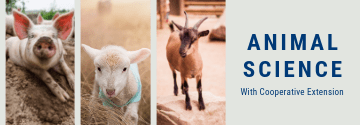Will non-GMO be the next trend?
When food products made from genetically modified organisms (GMOs) hit commercial markets in the late 1990s, many thought consumer opposition would be short lived. Now a vast majority of the nation’s corn and soybeans are GMOs, which means that milk—except for milk that’s organically produced—is also considered to be a GMO product.
The number of consumers who are buying organic food products and/or food products made without GMOs is increasing; both the organic and non-GMO food categories are seeing tremendous growth, says Sara Dorland, analyst with the Daily Dairy Report and managing partner at Ceres Dairy Risk Management, Seattle.
“Regardless of the science, 20 years after the first commercial introduction of genetically engineered (GE) crops, consumers are starting to push back, and a growing number of consumers are reaching for products with ‘clean’ labels, no artificial colors or flavors, and in some cases non-GMO,” Dorland notes. “And large food companies are starting to pay attention.”
Within the past year, Dorland notes that Kraft Foods removed artificial colors from its iconic yellow macaroni and cheese, and General Mills recently committed to labeling U.S. products that contain GMOs. Whole Foods has also said that by 2018 it will have implemented a full transparency policy on GMOs and will verify all non-GMO claims.
In late April, Dannon announced plans to transition its Oikos Greek, Danimals, and Dannon yogurts as non-GMO products starting this July. “In addition, by December 2017, Dannon, like General Mills, will label any brands that still contain genetically engineered ingredients. As larger companies look more seriously at sourcing non-GMO milk, the entire dairy industry will need to take note,” says Dorland.
While the news that the popularity of organic and non-GMO milk products is not necessarily good news for conventional milk producers, it could present an opportunity to those who are willing to change their strategy.
“For dairies converting to non-GMO milk, the overall process could be easier than switching to organic production,” Dorland notes. “Recently, the Non-GMO Project changed its rules for non-GMO milk production by reducing the conversion period from one year to 30 days, which basically reduces the amount of time a transitioning producer must sell non-GMO milk as conventional. This is a significant benefit for producers making or contemplating the switch.”
Non-GMO regulations also do not impose pasture restrictions on milk cows like those for organic milk producers. Assuming a producer does not have cloned or genetically altered cows, Dorland notes that making the switch to producing non-GMO milk is a matter of sourcing non-GMO feed.
“Readily available feed could be the limiting factor in conversion to non-GMO milk,” says Dorland. In 2015, 92% of all corn and 94% of all soybean acres were planted with genetically engineered seeds, according to USDA. For corn and soybeans to be considered non-GMO, a five-year transition period is required for crops used in livestock feed.
“That does not necessarily preclude the resulting crops from being eligible for non-GMO status during the transition period, but they must be proven to be non-GMO through testing, and the producer or farmer must demonstrate that the seeds and the crop are part of a system designed to avoid GMOs,” says Dorland. The Non-GMO Project focuses on testing feed because no reliable tests for milk exists. Organic feed also qualifies as non-GMO, but the cost of organic feed is likely higher.
If consumers are willing to pay up for non-GMO dairy products and manufacturers are willing to pay a premium for non-GMO milk, which at this point is unclear, some dairy producers will likely start looking to non-GMO production as a way to differentiate their product in what is currently an oversupplied milk market, Dorland adds.



Is milk produced from animals fed with genetically modified feed GM?
It depends on the farm and what he plants for feed.
Doing a school project, do you know when GMO milk started? and what kind of affects does it have on people and animals?
Here is a something that may be of interest:
As an informed consumer, you should know that there are only 11 commercially available GM crops in the United States: soybeans, corn (field and sweet), canola, cotton, alfalfa, sugar beets, summer squash, papaya, apples and potatoes. These are the only foods that can have a GMO version or a “Non-GMO” version. So why are there so many foods with the “Non-GMO” label if only ten GM crops are available? Great question. There shouldn’t be!
With many foods, it would be misleading to label them as GMO-free, as they do not contain any of the ten crops listed above. Therefore, when you see “GMO-free” labels at the store on unflavored bottled water (flat or sparkling), milk (and other unflavored dairy products), and many meats (beef, chicken, pork), don’t be misled, and know that these foods do not have GMO equivalents. They are all “GMO-free.”